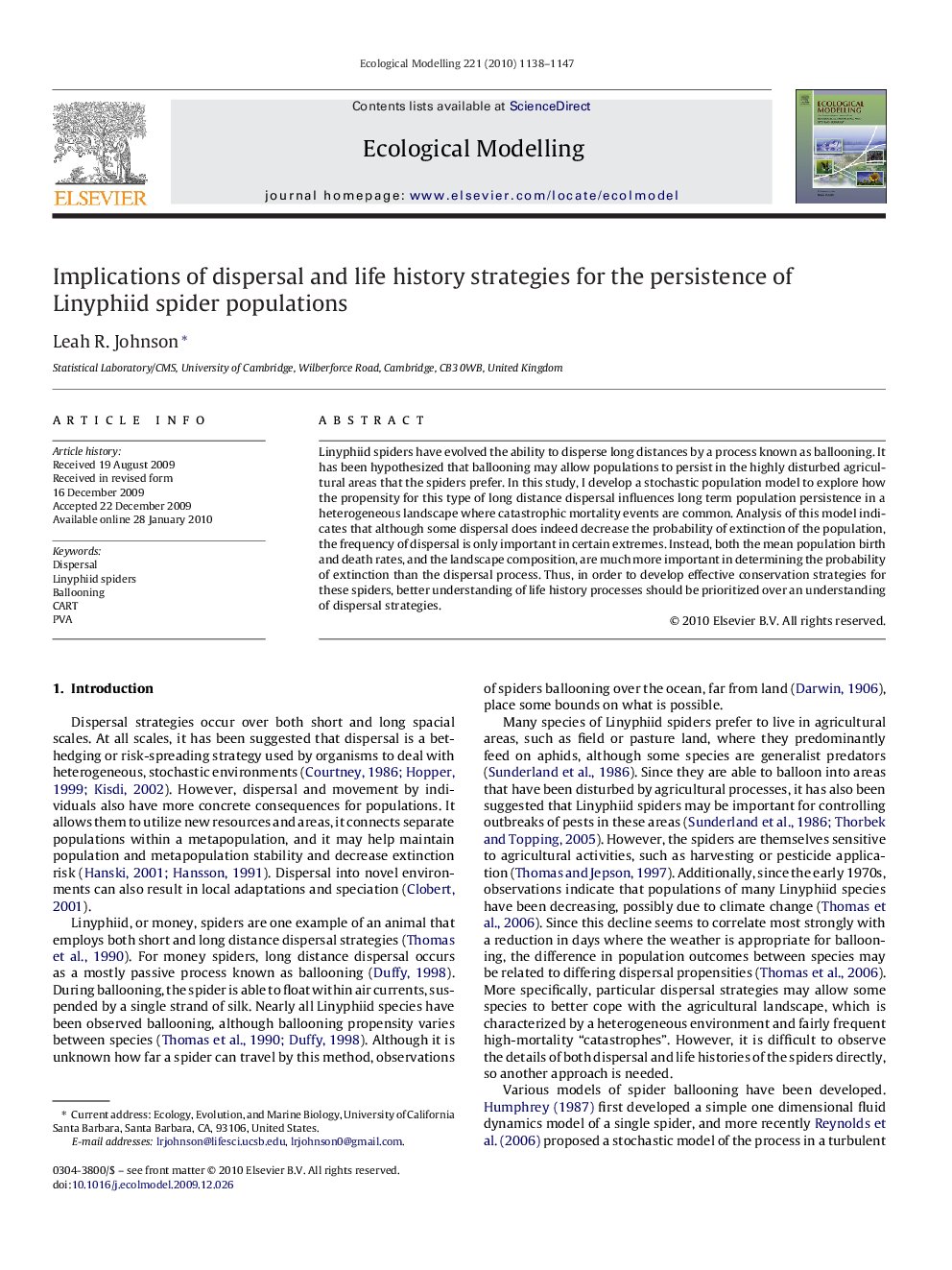| Article ID | Journal | Published Year | Pages | File Type |
|---|---|---|---|---|
| 4377399 | Ecological Modelling | 2010 | 10 Pages |
Linyphiid spiders have evolved the ability to disperse long distances by a process known as ballooning. It has been hypothesized that ballooning may allow populations to persist in the highly disturbed agricultural areas that the spiders prefer. In this study, I develop a stochastic population model to explore how the propensity for this type of long distance dispersal influences long term population persistence in a heterogeneous landscape where catastrophic mortality events are common. Analysis of this model indicates that although some dispersal does indeed decrease the probability of extinction of the population, the frequency of dispersal is only important in certain extremes. Instead, both the mean population birth and death rates, and the landscape composition, are much more important in determining the probability of extinction than the dispersal process. Thus, in order to develop effective conservation strategies for these spiders, better understanding of life history processes should be prioritized over an understanding of dispersal strategies.
